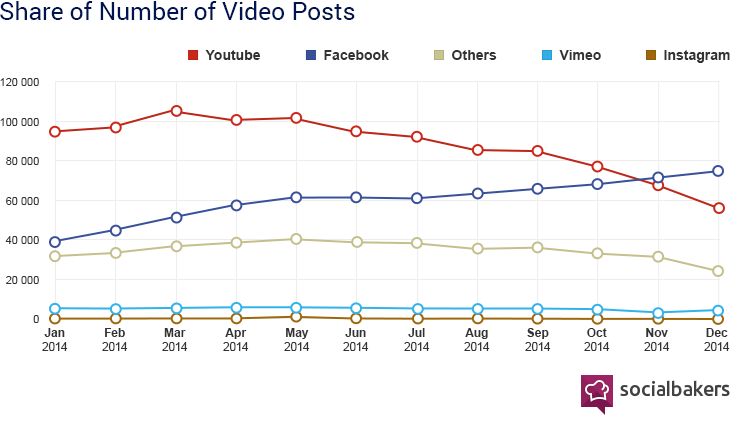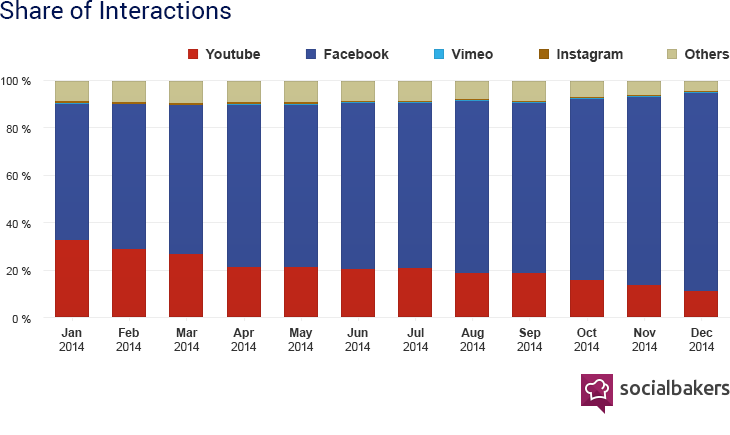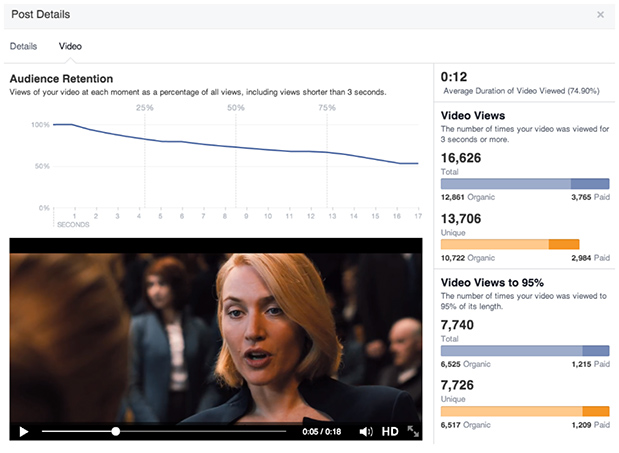Social
The CMO’s Guide to Facebook Video—Warts and All
For years, YouTube dominated digital video consumption. But last year, YouTube got doused in cold water, a wake-up call that may have come too late.
The Ice Bucket Challenge is widely regarded as the event that put Facebook’s native video on the map, having collectively garnered 10 billion views last summer. What really hurt YouTube was that the videos weren’t just being shared on Facebook—they were also hosted there. And since then, Facebook’s native video product has only become more popular.
In June 2014, Facebook updated its algorithm to “show better videos.” This meant that native Facebook videos were going to be ranked based on their view count and duration, along with likes, comments, and shares, which were already being taken into account. Facebook also started to recommend more videos to people who, well, watch videos (i.e., not skip over them in-feed).
As a result, native Facebook videos started to flood News Feeds. Not to mention, Facebook had also introduced auto-play without sound, meaning you didn’t really have to engage with a video to watch it. You just had to stop scrolling.
Evidently, that’s just what users did. And brands started to adapt.
According to Socialbakers, from May to December 2014, the number of Facebook videos uploaded by brands increased by nearly 50 percent. And in December, the number of branded Facebook video uploads officially exceeded the number of branded YouTube video uploads—by 20,000.
But as Dillon Baker dissected recently on TCS, Facebook’s video dominance has been shadowed by controversy thanks to a recent Medium post from YouTube video creator Hank Green.
Green calls Facebook out for a slew of offenses, including juicing views by up to 5x (since it defines a view at just three seconds) and allowing people to steal and post copyrighted videos. These videos accounted for 17 billion views in Q1 2015. In other words, clips that were stolen drove the vast majority of Facebook’s video traffic.
As Baker argues: “I don’t doubt that Facebook is working on solving these issues—but, like YouTube in its infancy, the social network has made these serious issues a secondary priority to unchecked growth.”
However, even though Facebook needs to address these serious issues, there are overwhelming signs that Facebook is a powerhouse video platform that needs to be on every CMO’s radar. In fact, it seems Facebook planned ahead to address some of these concerns, with the announcement that it would start to share ad revenue with video creators—a move that should lead to better relationships with creators and attract more high-quality content. And as Green alludes to in his post, Facebook has set up a video infrastructure that, in many ways, has the potential to help content creators. If it can take care of the concerns, there’s a system in place that will let brands drive engagement and get their clips in front of the right viewers—all at massive scale.
Organic reach
Facebook’s native videos are killing it in terms of organic reach. That means users are watching videos and sharing them with their friends of their own accord—not just because they’re being targeted through paid distribution.
Earlier this year, Socialbakers reported that native videos get more organic reach than any other type of content posted on Facebook. It also found consumers prefer videos from their favorite brands, relative to other social posts. For people who had previously liked a brand’s page, video led to a 148-percent increase in reach.
Last fall, Facebook revealed that it was seeing an average of 1 billion video views on the platform each day. Now, that number is 4 billion. As Baker points out, these numbers should be taken with a grain of salt, given Facebook’s paltry definition of a view.
However, this view-count explosion can also be attributed to Facebook’s integration of auto-play. Just a few months after implementing the feature, Facebook saw a 134-percent increase in native video plays. This makes sense, considering Facebook took the opt-in action away from users. You don’t have to do anything to watch a video—the content finds you, rather than vice versa.
If Facebook manages to find a way to protect creators, then this level of organic reach could help marketers get their work in front of new audiences, which would benefit both the network and the people relying on it for distribution.
Skyrocketing shares
Video views aren’t the only stats reaching new heights on Facebook. Publishers are also seeing huge improvements in the share rates of their content.
About a year ago, BuzzFeed almost entirely stopped posting its YouTube videos to Facebook. Instead, it started posting native Facebook videos that viewers could follow without sound, such as easy recipes with subtitles. According to Mashable, this chart from CrowdTangle shows that after making that shift, BuzzFeed Video increased its number of fans exponentially.
Even Upworthy, the publication that was perhaps punished hardest by Facebook’s algorithm change, ditched its strategy of aggregating YouTube videos, choosing to publish videos directly to Facebook. According to CrowdTangle, Upworthy’s shares went from an average of 3,500 for non-native videos to 239,000 for native videos.
Additionally, Socialbakers found that in December 2014, Facebook videos received more than 80 percent of all video interactions online. That’s a huge increase from the 50 percent it received in January.
Because of the explosive growth, Facebook is the place you need to be, even as it works to make its video product more creator-friendly. The platform just makes sharing more convenient for the viewer. You don’t have to copy and a link from a secondary source and post it to Facebook—everything can be done from within Facebook’s walls.
Advanced targeting and metrics
As a paid distribution channel, Facebook is the gold standard of targeting. Any Facebook post can be boosted for a price and targeted to users based on people who like your page, the friends of people who like your page, or a number of other filters that capture everything from basic info (location, interests, age, gender) to really granular behavior (device usage, digital activities, browser used, operating system used, job role, purchase behavior, company size, and much more).
Additionally, in June 2014, Facebook introduced a Power Editor feature that let marketers optimize promoted videos so clips are shown to the users most likely to view them in the News Feed. The network also added an option to include a call to action at the end of each video. As AdAge notes, YouTube offers similar targeting options for pre-roll ads, but it doesn’t rival Facebook’s specificity at scale.
Not only has targeting gotten better on Facebook, but measuring video performance has improved as well. In May 2014, Facebook introduced video metrics for both paid and organic videos. These metrics break down every channel and demographic you need to monitor, so you can keep track of how many people started watching a video, views, audience retention, level of interest in different parts of your video, and how many views you received from specific audiences (e.g., females aged 18 to 34).
If Facebook can use all of its power for good, then it’s in a great position to rule over digital video. The benefits are there, and the tools are in place, it’s just a matter of whether the company can take on the challenge to support creators.
If not, well then Facebook will only be pouring cold water on its own growth.
Image by zayats-and-zayatsGet better at your job right now.
Read our monthly newsletter to master content marketing. It’s made for marketers, creators, and everyone in between.









